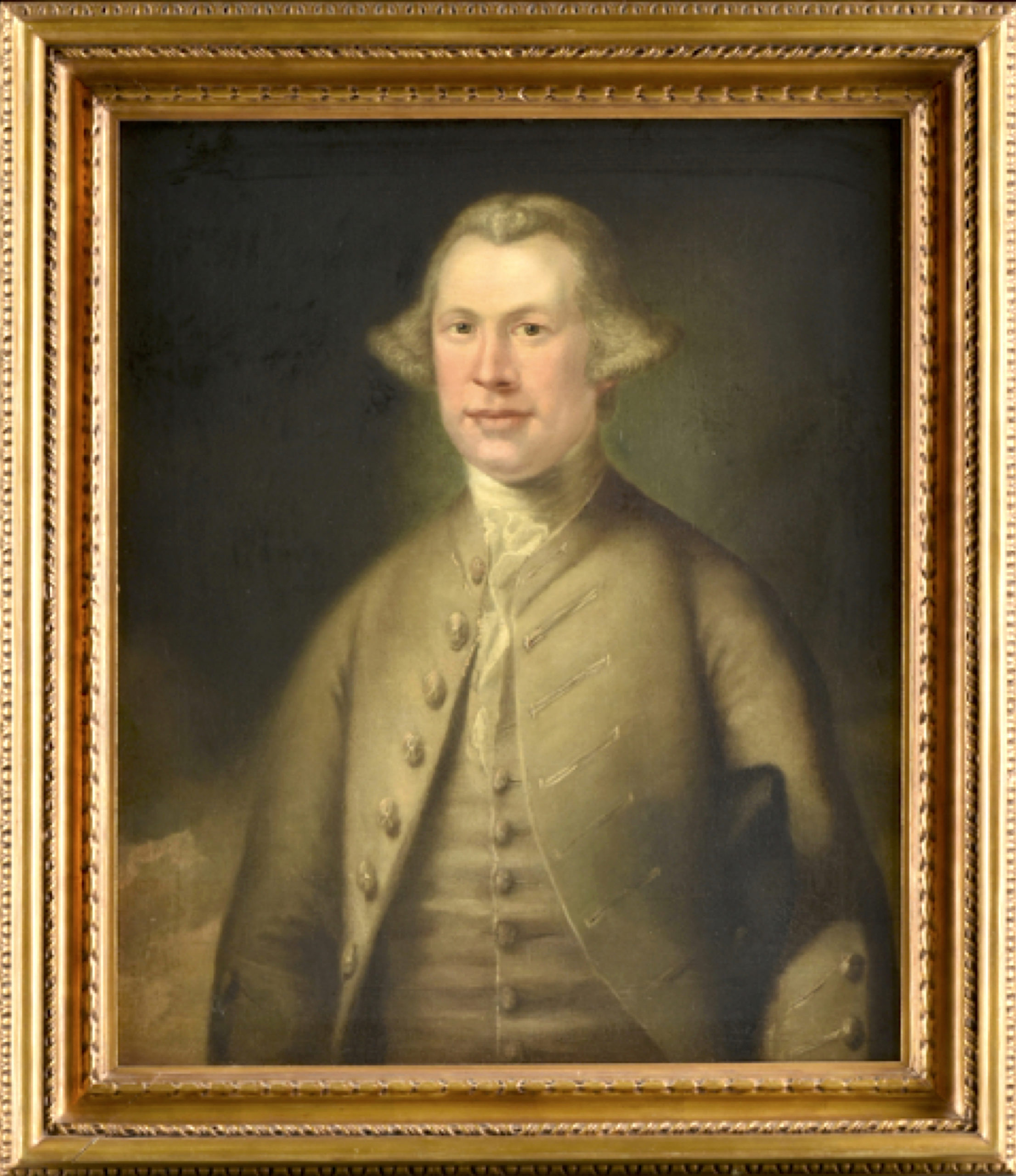Portrait of Portrait of Samuel Foote (1720 – 1777)
Medium: Oil on canvas
Dimensions: 30 x 25 Inches sights 37 x 31.50 Inches framed
Samuel Foote (1720-1777) Comedian and Playwright

Portrait of Portrait of Samuel Foote (1720 – 1777)
Medium: Oil on canvas
Dimensions: 30 x 25 Inches sights 37 x 31.50 Inches framed
Samuel Foote (1720-1777) Comedian and Playwright
Joseph Wright of Derby was an English artist who did landscape, genre and portrait painting. He as an artist of the Enlightenment because of his choice to reflect his interest in scientific experiments and depicted “figure groups in dark interiors illuminated by candles or lamps” (Getty). This method of handling light showed the influence of Rembrandt van Rijn.
He was born in Derby to a family where the father was an attorney and the town clerk. Joseph left Derby in 1751 for London to pursue his interest in art. His teacher was Thomas Hudson (1701-1779), who was also the teacher of Joshua Reynolds, and after completing a course of study, he worked as Hudson’s studio assistant for fifteen months. Then he returned to Derby where he established himself as a portrait and landscape painter, known for chiaroscuro or strong contrast of light and dark..
Titles of some of his paintings suggest his interest in manipulating light and dark such as companion pieces, Dovedale by Sunlight and Dovedale by Moonlight (1785) and Moonlight Landscape, which is in the collection of the John and Mable Ringling Museum of Art. In this work, moonlit sparkling water contrasts with a dark landscape.
Many of his paintings with industrial themes were linked to his association with industrialists Josiah Wedgwood and Richard Arkwright, owners of pottery and cotton industries. He was also a friend of Erasmus Darwin, grandfather of evolutionist Charles Darwin, and founder of the Lunar Society, which was a discussion group of prominent industrialists between 1765 and 1813.
The name derived from their holding their meetings deliberately when there was a full moon because their trips to and from the meeting were safer as there was no street lighting to safeguard against total darkness. Wedgwood and Arkwright were members as were Thomas Jefferson and Benjamin Franklin.
In 1773, he got married and that same year went to Italy, staying until 1775. In Naples, he saw the eruption of Mount Vesuvias, and he was also much fascinated with the fireworks displays he saw in Rome. He used those subjects in many subsequent paintings. Returning from Italy, he settled briefly at Bath doing portrait painting but was not successful in getting commissions, so he returned to Derby and settled there for the rest of his life.
Locating himself in this way made him “the first major English painter to build his career outside the capital.” Because of his popularity and because he had more leisure time as he got older, he increasingly turned to his love of landscape painting, which showed his fascination with rock formations and atmospherics.
In 1781, he was elected as an Associate at the Royal Academy of Arts and three years later was voted into full membership, but he declined the membership and disassociated himself from the Academy because of a perceived slight. However, he did participate in Academy exhibitions between 1783 and 1794. Posthumous exhibitions of his work were held in Derby in 1883, and at the Royal Academy in 1886.